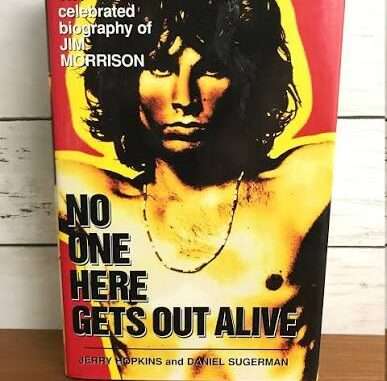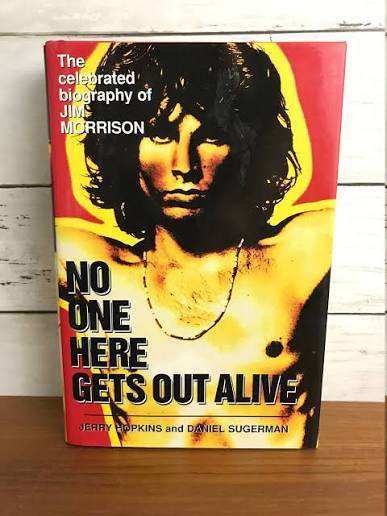
*No One Here Gets Out Alive* remains one of the most definitive and controversial rock biographies ever written — a haunting portrait of Jim Morrison, the enigmatic frontman of The Doors. Authored by Jerry Hopkins and Danny Sugerman, the book dives deep into Morrison’s chaotic life, exploring his poetry, rebellion, mysticism, and descent into self-destruction.
First published in 1980, nearly a decade after Morrison’s death in Paris at age 27, the biography quickly became a cultural phenomenon, selling millions of copies worldwide and reawakening interest in The Doors’ music and Morrison’s legacy.
The title itself, *No One Here Gets Out Alive*, is a phrase Morrison once used to describe his philosophy of life and mortality. It encapsulates the fatalistic beauty that ran through his lyrics and poetry — a reminder that life, however passionate or profound, always ends the same way.
Hopkins and Sugerman, who both had close ties to Morrison and The Doors, sought to unravel the man behind the myth: the student of literature who quoted Nietzsche and Blake, the self-proclaimed “erotic politician,” and the reckless performer who tested every boundary of the 1960s counterculture.
Jerry Hopkins, a respected journalist who had interviewed The Doors several times for *Rolling Stone*, began working on the biography in the mid-1970s. But it was Danny Sugerman — The Doors’ one-time teenage office assistant who later became their manager — who infused the project with an insider’s perspective and emotional depth. Sugerman idolized Morrison and had witnessed the band’s rise and turmoil firsthand. 
The book vividly chronicles Morrison’s transformation from a quiet, introspective student at UCLA’s film school into a rock god who embodied both danger and desire. It traces his evolution as a lyricist who drew from Greek tragedy, Native American spirituality, and French symbolist poetry.
Morrison’s fascination with death, dreams, and transcendence is portrayed not as a cliché of rock excess, but as the expression of a tortured artist searching for meaning in chaos. Yet the biography does not shy away from his darker sides — his volatile relationships, heavy drinking, and erratic behavior that alienated friends and bandmates alike.
When *No One Here Gets Out Alive* was released, it reignited the public’s fascination with Morrison and The Doors. The book’s success helped spark a full-scale revival of the band’s music in the early 1980s, paving the way for the release of *The Doors Greatest Hits* and later, Oliver Stone’s 1991 film *The Doors*. However, the biography also stirred controversy for blurring the lines between fact and legend. Some of Morrison’s friends and colleagues accused the authors of romanticizing his excesses, turning him into a martyr of rock ‘n’ roll rather than portraying him as a flawed human being.
Despite the criticism, the book endures as a defining account of Morrison’s life and the turbulent era he represented. It captures the spirit of the 1960s — a time when music, rebellion, and poetry collided in a cultural explosion that changed the world. Hopkins and Sugerman didn’t just tell the story of a musician; they chronicled the making of a myth.
More than forty years after its release, *No One Here Gets Out Alive* continues to attract new generations of readers who are drawn to Morrison’s mystery — the voice that still echoes through songs like “Riders on the Storm” and “The End.”
The biography stands as both a celebration and a cautionary tale, reminding us that Morrison’s brilliance came at a heavy cost. In the end, the book’s haunting title remains true to its subject — no one, not even Jim Morrison, could escape the limits of life. But through his art, he ensured that his spirit, wild and defiant, would never truly die.
Leave a Reply